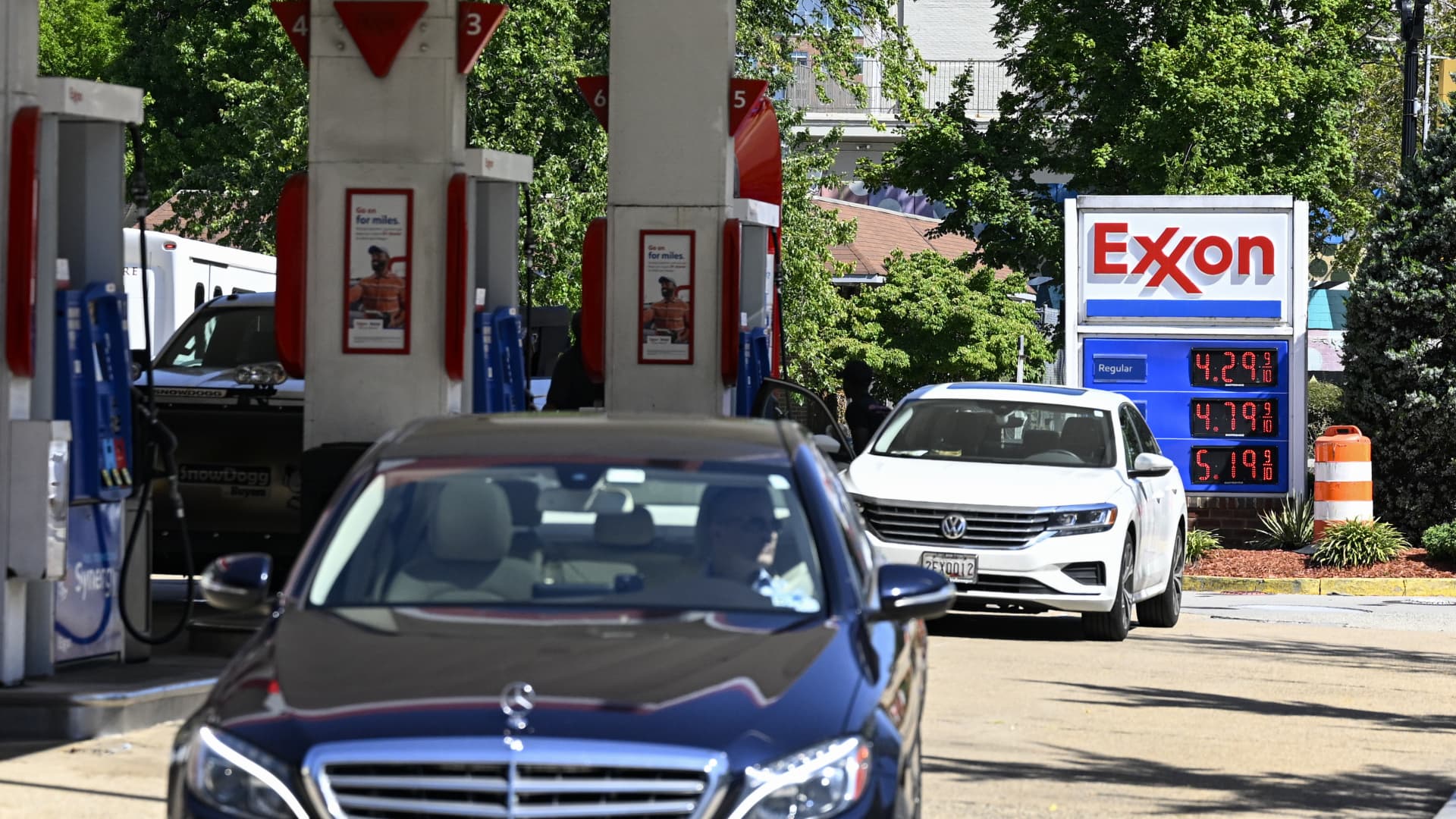Inflation jumped in August on the back of higher gasoline prices, according to the consumer price index.
But there’s good news for Americans: That increase is likely temporary, economists said. Outside of energy, there are signs that inflation continued its broad retreat last month, they said.
“This should just be a temporary interruption of the downward trend,” said Andrew Hunter, deputy chief U.S. economist at Capital Economics.
“Broadly, we’re already seeing pretty clear signs the situation is approaching normal again,” he added.
Inflation measures how quickly prices are rising across the U.S. economy.
In August, the CPI increased 3.7% from 12 months earlier, up from 3.2% in July, the U.S. Bureau of Labor Statistics said Wednesday.
The rate has fallen from a pandemic-era peak of 9.1% in June 2022, the highest since 1981.
The CPI is a key barometer of inflation, measuring prices of anything from fruits and vegetables to haircuts and concert tickets.
How gas prices contributed to higher inflation
Gasoline prices jumped 10.6% in August alone, following a 0.2% increase in July, according to Wednesday’s CPI report. (The BLS adjusts those numbers for seasonal trends.) Gasoline cost $3.84 a gallon, on average, as of Tuesday, according to AAA.
Gasoline was the largest contributor to inflation in August, accounting for over half of the increase, according to the BLS.
The increase is largely attributable to dynamics in the market for crude oil, which is refined into gasoline, Hunter said. On Tuesday, oil prices hit their highest levels since November.
Transportation costs — including gasoline — are the second-largest expense for the average household, according to the U.S. Department of Labor’s consumer expenditures survey. (Housing is the largest.)
While rising gasoline prices may be challenging for consumers from a budgetary perspective, it’s unlikely they’ll be sustained beyond another month or two, Hunter said.
While gasoline prices have risen in the short-term, they’ve declined 3.3% from a year ago.
‘Core’ inflation showed a ‘bump in the road’
When assessing underlying inflation trends, economists generally like to look at one measure that strips out energy and food prices, which tend to be volatile from month to month. This pared-down measure — known as “core” CPI — fell to an annual rate of 4.3% in August from 4.7% in July.
On a monthly basis, core inflation rose slightly, to 0.3% in August from 0.2% in July. The economy would need consistent monthly core CPI readings of 0.2% to get the U.S. back to its pre-pandemic baseline, a time when inflation was low and stable, economists said.
The increase in monthly core CPI “is a little bump in the road,” said Kayla Bruun, senior economist at Morning Consult.
“It doesn’t mean it’s turning around and going in the other direction,” Bruun said. “Overall, most of the pieces are headed in the right direction.”
Housing was the largest contributor to the rise in core CPI in August, according to the BLS.
However, rent inflation is poised to keep falling, economists said. That’s because new monthly rent prices have “slowed very sharply” in the U.S. over the past year or so, but such trends generally feed through to the CPI data with a lag, Hunter said.
Other “notable” contributors to inflation over the past year include motor vehicle insurance (prices are up 19.1% from August 2022), recreation (up 3.5%), personal care (5.8%) and new vehicles (2.9%), the BLS said.
Conversely, easing price pressures for groceries — a “staple household expense” — have been a “bright spot” for consumers, said Greg McBride, chief financial analyst at Bankrate.
Inflation is multi-pronged and global
Inflation during the pandemic era has been a “complicated phenomenon” stemming from “multiple sources and complex dynamic interactions,” according to a paper published in May and co-authored by Ben Bernanke, former chair of the U.S. Federal Reserve, and Olivier Blanchard, senior fellow at the Peterson Institute for International Economics.
At a high level, inflationary pressures — which have been felt globally — are due to an imbalance between supply and demand.
For example, the pandemic snarled global supply chains and led price to surge as the U.S. economy reopened. Basically, consumers unleashed pent-up demand while there was a shortage of goods.
Russia’s invasion of Ukraine in early 2022 exacerbated backlogs in the global supply chain and fueled higher prices for food, energy and other commodities.
And a hot labor market led employers to raise wages at the fastest pace in decades, feeding through to inflation particularly in labor-intensive service industries.
Those trends have largely unwound, Hunter said. Wage growth is still “quite high” but coming down and the broad labor market is easing, he said.
“We’ve definitely come a long way in terms of getting back to normal,” he said. “We’re not all the way there yet.”
